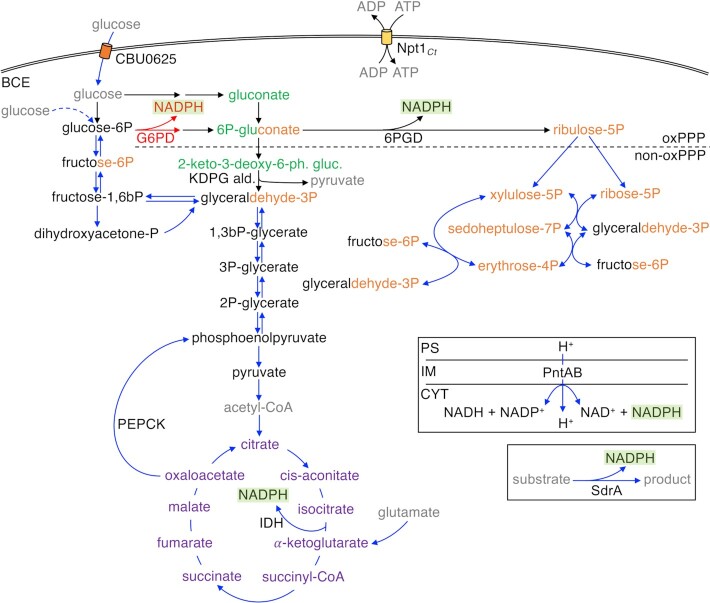Figure 5.
Major components of central energy metabolism and NADPH regeneration in C. burnetii in comparison to other parasitic bacteria. Steps are indicated by black (canonical) or blue (C. burnetii) arrows. The broken blue line indicates a step for which the reaction mechanism in C. burnetii is uncertain. Red indicates reaction performed by G6PD and resulting NADPH in Cb+G6PD. NADPH from relevant reactions are highlighted in green. Intermediates related to major pathways are color coded: glycolysis/EMP and gluconeogenesis (black); ED pathway (green); PPP (orange); and TCA cycle (purple). Some intermediates relate to more than one pathway (dual coloring). Gray indicates components not related to a specific pathway. BCE indicates the bacterial cell envelope. oxPPP and non-oxPPP show separation between the two branches of the PPP. The reaction substrate(s) and product(s) for SdrA have not been determined. PntAB is coupled with the proton motive force. G6PD, glucose-6-phosphate dehydrogenase (zwf); 6PGD, 6-phosphogluconate dehydratase (edd); KDPG ald., 2-keto-3-deoxy-6-phosphogluconate aldolase (eda); PEPCK, phosphoenolpyruvate carboxykinase (pckA); PntAB, pyridine nucleotide transhydrogenase (pntA/pntB); IDH, isocitrate dehydrogenase (icd); and SdrA, short-chain dehydrogenase reductase A (sdrA). Boxes indicate reactions not directly related to the central metabolic network. PS, periplasmic space; IM, inner membrane; and CYT, cytoplasm.

